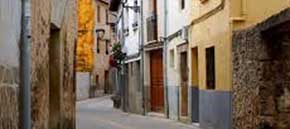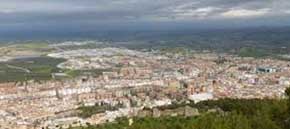When thinking of Sefarad, the Hebrew name for the Iberian Peninsula, cities like Toledo, Córdoba, or Girona with their iconic Jewish quarters usually come to mind. However, there are many other lesser-known Jewish quarters that hold true hidden treasures and a fascinating history, waiting to be rediscovered by curious travelers and heritage lovers.
Archaeological jewels beneath the streets of Toledo
Toledo is synonymous with Jewish history, but even in its famous Jewish quarter, there are still secrets to uncover. Recently, during construction work in the heart of the Jewish quarter, a hidden treasure was found: more than 200 glass pieces from an old silk loom, along with vessels, goblets, and lamps from a luxurious domestic tableware. These objects, carefully hidden by a Sephardic family at the end of the 15th century, tell the drama of the expulsion and the richness of Sephardic daily life. The archaeological finds allow us to imagine the sophistication of the trades and the importance of textiles in the Jewish community of Toledo.
Estella-Lizarra: the Navarrese legacy
In Navarre, Estella-Lizarra surprises with the footprint of its Jewish quarter, which became the third most important in the kingdom. Although the old synagogue has disappeared, walking along the “Rúa de las Tiendas” lets you sense the vitality of the medieval Jewish merchants. The New Jewish Quarter, next to the Belmecher castle, and the vestiges of Hebrew life are now part of the city's historical appeal.
Lorca: the synagogue beneath the castle
In the Region of Murcia, Lorca’s Jewish quarter remained hidden for centuries beneath the Castle. Excavations have brought to light houses, ritual lamps, and more than 2,000 glass fragments from lamps found in the synagogue, testimony to an active and devout community. The Municipal Archaeological Museum preserves these finds, which help reconstruct Jewish life in southeastern Iberia.
Monforte de Lemos: coexistence and symbols
In Galicia, Monforte de Lemos stands out because, unlike other cities, it did not have an exclusively Jewish quarter: Sephardic Jews shared space with Christians. Even today you can see Stars of David carved in stone and the house of the Gaibor family, one of the most important Jewish families in the city.
Sagunto: intact layout and ritual baths
Sagunto, in Valencia, preserves the layout of its Jewish quarter almost as it was in Sephardic times. The “Portalet de la Judería” is the starting point to explore historic streets and visit the Casa dels Berenguer, where remains of the mikvé, the Jewish ritual bath, and a visitable cemetery have been found, testimonies of the life and customs of the community.
La Garrotxa and Besalú: the medieval mikvé
In the region of La Garrotxa, the village of Besalú houses one of the few preserved medieval mikvés in Europe, a 12th-century purification bath. Its labyrinth of streets and the old synagogue evoke the prosperity and spirituality of the Jewish community in medieval Catalonia.
Jaén: the almost forgotten Jewish quarter
Jaén, with its Jewish quarter in the Santa Cruz neighborhood, is an almost unknown heritage gem. More than 300 families once lived there, with a synagogue, ritual bath, and their own shops. The house of the Ibn Shaprut family is one of the emblematic places that recall the importance of the Jewish community in the city, a crossroads of cultures and civilizations.
The value of the hidden
The most unknown Jewish quarters of Sefarad are true hidden treasures that allow us to understand the diversity and richness of Jewish life on the peninsula. Whether through archaeological finds, symbols carved in stone, or the memory of their streets, these places invite us to rediscover a fascinating past and to value the Sephardic legacy in all its breadth.
Exploring these quarters is to travel back in time, to be surprised by silenced stories, and to contribute to the preservation of a heritage that remains alive in the culture and memory of Sefarad.




